
Montañita Beach: Ecuador's Surfing Paradise
Discover Montañita Beach in Ecuador: A Surfing Haven with a Bohemian Vibe and Bustling Nightlife.
Montañita Beach, located on Ecuador's Pacific coast, is a vibrant and lively destination known for its world-class surf breaks and bohemian atmosphere. The beach is renowned for its consistent waves, making it a hotspot for surfers from around the globe. Whether you are a seasoned surfer or a beginner looking to catch your first wave, Montañita offers a variety of surf schools and rental shops to get you started. Beyond the surf, Montañita's charm lies in its laid-back vibe and bustling nightlife. The town is dotted with colorful beach huts, lively bars, and eclectic eateries, where you can enjoy fresh seafood and local delicacies. The streets come alive in the evening with music and dancing, creating a festive atmosphere that lasts well into the night. For those seeking a break from the waves and the nightlife, Montañita is surrounded by natural beauty. Explore the nearby tropical forests, take a yoga class on the beach, or simply relax under the palm trees. Whether you are an adventurer, a party-goer, or someone looking to unwind, Montañita Beach offers a little something for everyone.
Local tips in Montañita Beach
- Best Surfing: Visit between December and April for the best surfing conditions.
- Currency: Use US dollars, the official currency of Ecuador.
- Local Transport: Tuk-tuks are a cheap and fun way to get around town.
- Safety: Keep an eye on your belongings, especially during busy nights.
- Language: Learning a few basic Spanish phrases can be very helpful.
Montañita Beach: Ecuador's Surfing Paradise
Montañita Beach, located on Ecuador's Pacific coast, is a vibrant and lively destination known for its world-class surf breaks and bohemian atmosphere. The beach is renowned for its consistent waves, making it a hotspot for surfers from around the globe. Whether you are a seasoned surfer or a beginner looking to catch your first wave, Montañita offers a variety of surf schools and rental shops to get you started. Beyond the surf, Montañita's charm lies in its laid-back vibe and bustling nightlife. The town is dotted with colorful beach huts, lively bars, and eclectic eateries, where you can enjoy fresh seafood and local delicacies. The streets come alive in the evening with music and dancing, creating a festive atmosphere that lasts well into the night. For those seeking a break from the waves and the nightlife, Montañita is surrounded by natural beauty. Explore the nearby tropical forests, take a yoga class on the beach, or simply relax under the palm trees. Whether you are an adventurer, a party-goer, or someone looking to unwind, Montañita Beach offers a little something for everyone.
When is the best time to go to Montañita Beach?
Iconic landmarks you can’t miss
Playa Montañita
Discover the vibrant atmosphere and stunning beauty of Playa Montañita, Ecuador's ultimate beach destination for relaxation and adventure.
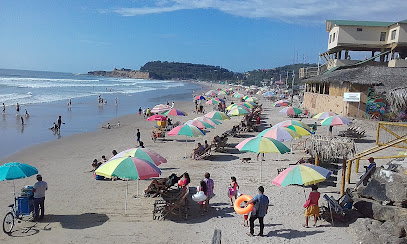
Mirador
Discover Mirador in Montañita, Ecuador: An observation deck offering stunning panoramic views and unforgettable sunsets along the Pacific coast.

Selina Montañita
Experience the perfect blend of surf, relaxation, and vibrant community at Selina Montañita, your gateway to Ecuador’s stunning coastline.

Hotel Baja Montañita
Discover the enchanting coastal charm of Hotel Baja Montañita, where vibrant culture meets relaxation and adventure on Ecuador's stunning Pacific coast.

Dharma Beach
Experience the perfect blend of relaxation and adventure at Dharma Beach, your serene coastal escape in Montañita, Ecuador.

Montañita Estates Hotel & Villas
Discover the perfect blend of relaxation and adventure at Montañita Estates Hotel & Villas, your ultimate coastal retreat in Ecuador.

Caña Grill
Dive into the vibrant nightlife of Montañita at Caña Grill, where music, dancing, and local flavors create an unforgettable experience.

TIKI LIMBO
Experience the vibrant flavors of TIKI LIMBO in Montañita, a perfect blend of restaurant and bakery offering a cozy atmosphere and delicious food.
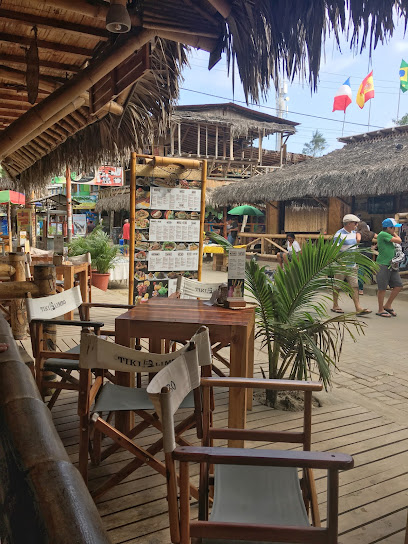
Hidden House Hostel
Discover the charm of Montañita at Hidden House Hostel – your perfect base for adventure and relaxation in Ecuador's coastal paradise.

Punta Hills Montañita
Experience the best of Montañita at Punta Hills, where stunning ocean views meet vibrant local culture in Ecuador's surf paradise.

Jajá en Balsa
Discover Jajá en Balsa in Montañita, Ecuador - where delicious pizzas and a vibrant atmosphere await every traveler looking for a culinary delight.
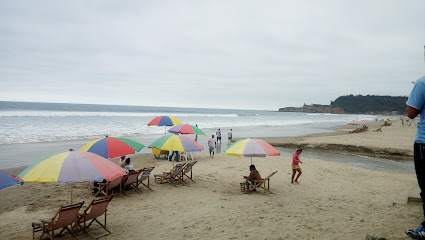
Lost Beach Club
Experience the electrifying nightlife at Lost Beach Club in Montañita, where world-class DJs and stunning beach views create unforgettable memories.
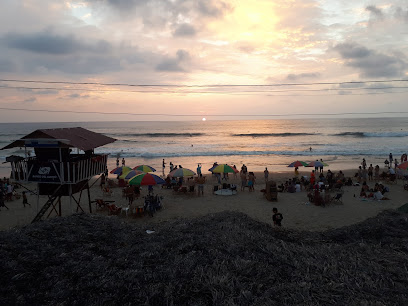
Balsa Surf Camp Guest House
Experience the vibrant surf culture of Montañita at Balsa Surf Camp Guest House, where adventure meets relaxation in a stunning coastal paradise.

Esperanto B&B Backpacker Surf Hostel
Discover the vibrant surf culture and tranquil beaches of Montañita at Esperanto B&B Backpacker Surf Hostel, your perfect stay in Ecuador.

Hotel Boutique El Taino De Sky
Discover the perfect blend of comfort and vibrant beach culture at Hotel Boutique El Taino De Sky in Montañita, Ecuador.

Unmissable attractions to see
Manglaralto Park
Explore Manglaralto Park, a serene sanctuary near Montañita, Ecuador, filled with lush mangroves, diverse wildlife, and peaceful walking trails.
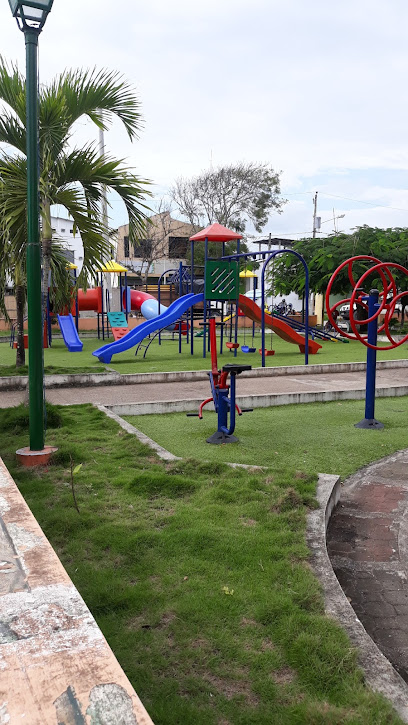
Boat Tours, Rentals And Marine Exploration
Experience the thrill of Montañita's boat tours and rentals - adventure awaits in Ecuador's stunning coastal paradise.

Nueva Montañita Ecological Park
Experience tranquility at Nueva Montañita Ecological Park, a beautiful natural retreat in the heart of Montañita, Ecuador, perfect for relaxation and exploration.

Calle de las luces, Montañita
Experience the vibrant culture, nightlife, and artistic charm of Calle de las Luces in Montañita, Ecuador - a must-visit for every traveler.

MIRADOR OLON - VIEW POINT
Discover the breathtaking beauty of Ecuador from Mirador Olon, an incredible observation deck offering stunning coastal views and local culture.

Montanita Main Park
Explore the vibrant atmosphere and lush landscapes of Montanita Main Park, a tranquil oasis in the heart of Ecuador's coastal paradise.

Manglar El Mogote, Olón
Discover Manglar El Mogote, a breathtaking hiking area in Olón, Ecuador, showcasing stunning mangrove ecosystems and rich biodiversity.

Montañita
Discover the enchanting beach town of Montañita, Ecuador, where surf culture meets vibrant nightlife in a stunning coastal paradise.

mirador de montañita
Experience breathtaking views at Mirador de Montañita, a stunning hiking area showcasing the natural beauty of Ecuador's coast.

Comuna Dos mangas
Discover the enchanting Comuna Dos Mangas, a vibrant Ecuadorian tourist attraction known for its stunning landscapes and rich cultural experiences.

Samudra surf rental & sell
Experience the thrill of surfing in Montañita with quality rentals and expert tips from Samudra Surf Rental & Sell, your go-to surf shop.

Proyecto La Colmena, Miros
Experience the vibrant culture and artistry of Olon at Proyecto La Colmena, Miros - a unique tourist attraction that captures the essence of Ecuador.

Caimanartes
Explore Caimanartes in Montañita: A vibrant handicraft fair showcasing the artistic spirit of Ecuador with unique handmade treasures.

Proyecto La Colmena, Balam
Experience the serene beauty and rich culture at Proyecto La Colmena, Balam in Olon, Ecuador, a must-see destination for every traveler.

Cascadas de Alex
Experience the breathtaking beauty of Cascadas de Alex, a hidden ecological paradise in Olon, Ecuador with stunning waterfalls and vibrant wildlife.

Essential places to dine
The Wave Surf Resto Cafe
Experience delightful fusion cuisine at The Wave Surf Resto Cafe in Montañita – where American flavors meet Ecuadorian charm.

Shankha Sushi & Thai
Experience exquisite sushi and authentic Thai cuisine at Shankha Sushi & Thai in Montanita - A culinary gem by the coast!

Pigro
Discover the taste of Italy at Pigro in Montañita - where authentic flavors meet vibrant coastal vibes.

TIKI LIMBO
Experience the flavors of Ecuador at Tiki Limbo in Montañita – where culinary creativity meets coastal charm.

Tambo Sabores Peruanos
Experience the authentic flavors of Peru at Tambo Sabores Peruanos in Montañita - where every dish tells a story.

Tiburon
Experience the flavors of Montañita at Tiburon – where fresh seafood meets vibrant coastal culture in a cozy setting.

Lido Beach & Grill
Experience coastal dining at Lido Beach & Grill in Montanita; fresh seafood with stunning ocean views await your visit.

La Terreta
Experience authentic Ecuadorian flavors at La Terreta in Montañita – where fresh ingredients meet warm hospitality.

MAEO BEACH
Experience the best of local cuisine at Maeo Beach in Montañita—where every meal is paired with stunning ocean views.

Kapadokia restaurant
Experience culinary bliss at Kapadokia Restaurant in Montañita—where local flavors meet international flair amidst stunning coastal views.

Hierba Buena
Experience authentic Ecuadorian cuisine at Hierba Buena in Montanita - where fresh flavors meet vibrant culture.

Carmita's Pancake House Restaurant
Experience authentic Ecuadorian flavors at Carmita's Pancake House in Montanita – where delicious pancakes meet warm hospitality.

DEKEL MONTAÑITA “Restaurante & Bar”
Discover the ultimate beachside dining experience at DEKEL MONTAÑITA - where local flavors meet vibrant nightlife.

Tapeo el Español
Discover the essence of Spanish cuisine at Tapeo el Español in Montañita - where every bite tells a story.

La Mafia Restaurant
Experience authentic Ecuadorian cuisine infused with gastropub flair at La Mafia Restaurant in vibrant Montañita.

Markets, malls and hidden boutiques
Playa Montañita
Experience the breathtaking beauty and vibrant culture of Playa Montañita, Ecuador's premier beach destination for surfers, sun-seekers, and nightlife lovers.

Selina Montañita
Discover Selina Montañita, a vibrant beachfront hub offering surf lessons, wellness experiences, and a lively community atmosphere in Ecuador.

Tía Montanita
Explore Tía Montanita, the bustling supermarket in Montañita offering fresh local produce, meats, and everything you need for a delightful culinary experience.

Hotel Boutique El Taino De Sky
Discover the charm of Montañita at Hotel Boutique El Taino De Sky, a serene retreat combining comfort, local art, and easy access to vibrant beach life.

Sweet Spot Montañita
Experience the vibrant flavors and cozy atmosphere of Sweet Spot Montañita, a must-visit coffee haven in the heart of Ecuador's coastal paradise.

Tres Palmas Boutique Hotel
Experience the perfect blend of comfort, surf culture, and culinary delights at Tres Palmas Boutique Hotel in Montañita, Ecuador.

Pipaparaiso
Pipaparaiso: Indulge in the finest cigars and embrace the laid-back spirit of Montañita's vibrant culture.
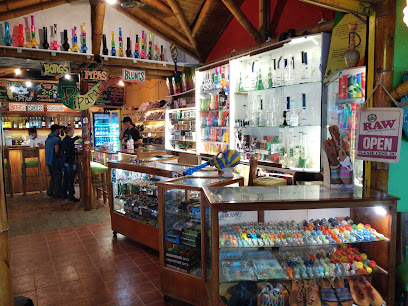
Casa I Love Montañita Town
Explore the vibrant culture of Montañita with unique souvenirs at Casa I Love Montañita, your go-to shop for local treasures.

Surf&Dive Montanita
Experience the thrill of surfing and diving at Surf&Dive Montanita, Ecuador's premier water sports destination.

MARKET CHIRRY
Discover the essence of Montañita at Market Chirry, a vibrant general store offering local flavors, unique crafts, and a welcoming atmosphere.

Montanita Surf Aloha
Experience the thrill of surfing at Montanita Surf Aloha, where every wave tells a story in Ecuador's beach paradise.

Gitana Swimwear
Discover stylish swimwear and beachwear at Gitana Swimwear in Montañita, Ecuador, where coastal culture meets contemporary fashion.

Wiki Company
Explore Wiki Company in Montañita, Ecuador, your ultimate surf shop for quality gear, stylish beachwear, and a taste of local surf culture.

Creaciones Leydi Montañita
Discover stylish beach attire at Creaciones Leydi Montañita, the ultimate destination for beach lovers in Montañita, Ecuador.

Che ñaña, Montañita
Discover the unique styles of Che ñaña in Montañita, where local fashion meets vibrant coastal culture in a shopping experience like no other.

Essential bars & hidden hideouts
MAEO BEACH
Experience the vibrant atmosphere of Maeó Beach in Montañita, where delicious food meets breathtaking coastal views and endless activities.
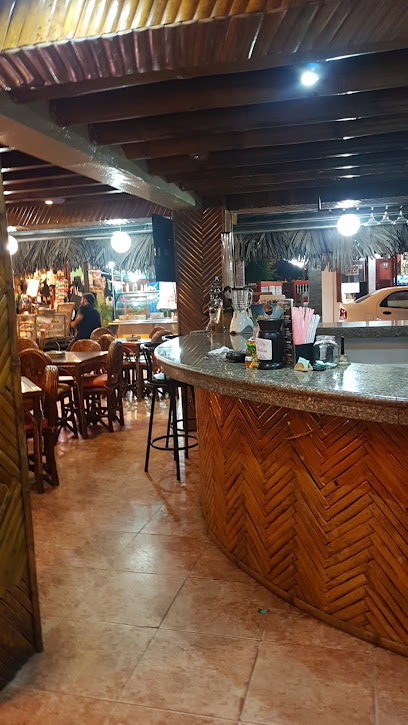
DEKEL MONTAÑITA “Restaurante & Bar”
Discover the vibrant culinary and nightlife experience at Dekel Montañita, a top-rated restaurant and bar in the heart of Montañita, Ecuador.

Merman Beach Club
Discover the vibrant Merman Beach Club in Montañita, Ecuador, where refreshing cocktails and lively atmosphere meet stunning ocean views.

KABUYA Lounge
Discover the vibrant atmosphere of KABUYA Lounge in Montañita, where exceptional cocktails and lively nights await you.

Montañita Brewing Company
Discover Montañita Brewing Company, where craft beers and vibrant atmosphere create unforgettable memories in Montañita, Ecuador.

Cocteles Manuelito
Experience the vibrant nightlife of Montañita at Cocteles Manuelito, where exquisite cocktails meet a lively beach atmosphere.

Kaza Roots
Experience the vibrant culture of Montañita at Kaza Roots, where art, food, and live music create an unforgettable atmosphere.

Moon´s Swins. Las mejores bebidas y picaditas a la orilla del mar
Discover the vibrant atmosphere and refreshing cocktails at Moon's Swins, a coastal gem in Montañita, Ecuador, perfect for beach lovers and nightlife enthusiasts.

The Attic Bar discoteca
Experience the electrifying nightlife of Montañita at The Attic Bar, where cocktails and beats create unforgettable memories.
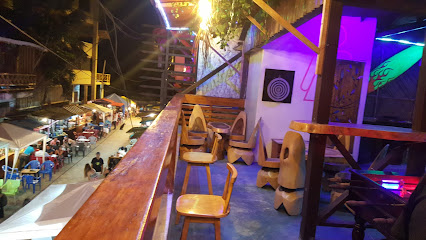
Cocteles De El Galán
Discover the vibrant cocktail scene at Cocteles De El Galán, where innovative mixology meets the laid-back charm of Montañita's beach culture.

Punto Fijo Lounge Bar
Discover the vibrant nightlife of Montañita at Punto Fijo Lounge Bar, where lively music and refreshing cocktails create unforgettable memories.

Cocteles d' Gloria
Discover the vibrant flavors of Montañita at Cocteles d' Gloria, where every cocktail tells a tropical story and every night is a celebration.

Cocteleria SURFIESTA
Experience the vibrant nightlife of Montañita at Cocteleria SURFIESTA, where every cocktail tells a story of Ecuador's rich flavors.

Cócteles Emilia
Experience the finest cocktails in Montañita at Cócteles Emilia—a vibrant bar that embodies the lively spirit of Ecuador's beach culture.

Coctelería De Gisse
Unwind at Coctelería De Gisse, Montañita's vibrant bar offering creative cocktails and a lively atmosphere, perfect for enjoying Ecuadorian nightlife.

Local Phrases about Montañita Beach
-
- HelloHola
[oh-lah] - GoodbyeAdiós
[ah-dee-ohs] - YesSí
[see] - NoNo
[noh] - Please/You're welcomePor favor/De nada
[por fah-vohr/deh nah-dah] - Thank youGracias
[grah-see-ahs] - Excuse me/SorryDisculpe/Perdón
[dee-skool-peh/pehr-dohn] - How are you?¿Cómo estás?
[koh-moh ehs-tahs] - Fine. And you?Bien. ¿Y tú?
[byen. ee too] - Do you speak English?¿Hablas inglés?
[ah-blahs een-glehs] - I don't understandNo entiendo
[noh ehn-tyen-doh]
- HelloHola
-
- I'd like to see the menu, pleaseMe gustaría ver el menú, por favor
[meh goos-tah-ree-ah behr ehl meh-noo, por fah-vohr] - I don't eat meatNo como carne
[noh koh-moh kahr-neh] - Cheers!¡Salud!
[sah-loohd] - I would like to pay, pleaseMe gustaría pagar, por favor
[meh goos-tah-ree-ah pah-gahr, por fah-vohr]
- I'd like to see the menu, pleaseMe gustaría ver el menú, por favor
-
- Help!¡Ayuda!
[ah-yoo-dah] - Go away!¡Vete!
[veh-teh] - Call the Police!¡Llama a la Policía!
[yah-mah ah lah poh-lee-see-ah] - Call a doctor!¡Llama a un médico!
[yah-mah ah oon meh-dee-koh] - I'm lostEstoy perdido
[ehs-toy pehr-dee-doh] - I'm illEstoy enfermo
[ehs-toy ehn-fehr-moh]
- Help!¡Ayuda!
-
- I'd like to buy...Me gustaría comprar...
[meh goos-tah-ree-ah kohm-prahr...] - I'm just lookingSolo estoy mirando
[soh-loh ehs-toy mee-rahn-doh] - How much is it?¿Cuánto cuesta?
[kwan-toh kwehs-tah] - That's too expensiveEso es muy caro
[eh-soh ehs moo-ee kahr-oh] - Can you lower the price?¿Puede bajar el precio?
[pweh-deh bah-hahr ehl pree-syoh]
- I'd like to buy...Me gustaría comprar...
-
- What time is it?¿Qué hora es?
[keh oh-rah ehs] - It's one o'clockEs la una
[ehs lah oo-nah] - Half past (10)Es la diez y media
[ehs lah dyehs ee meh-dee-ah] - MorningMañana
[mah-nyah-nah] - AfternoonTarde
[tahr-deh] - EveningNoche
[noh-cheh] - YesterdayAyer
[ah-yehr] - TodayHoy
[oy] - TomorrowMañana
[mah-nyah-nah] - 1Uno
[oo-noh] - 2Dos
[dohs] - 3Tres
[trehs] - 4Cuatro
[kwah-troh] - 5Cinco
[seen-koh] - 6Seis
[sehs] - 7Siete
[syeh-teh] - 8Ocho
[oh-choh] - 9Nueve
[nweh-veh] - 10Diez
[dyehs]
- What time is it?¿Qué hora es?
-
- Where's a/the...?¿Dónde está...?
[dohn-deh ehs-tah] - What's the address?¿Cuál es la dirección?
[kwahl ehs lah dee-rehk-syohn] - Can you show me (on the map)?¿Puedes mostrarme (en el mapa)?
[pweh-dehs mohs-trahr-meh (ehn ehl mah-pah)] - When's the next (bus)?¿Cuándo es el próximo (autobús)?
[kwan-doh ehs ehl proh-ksy-moh (ow-toh-boos)] - A ticket (to ....)Un boleto (a ....)
[oon boh-leh-toh (ah ....)]
- Where's a/the...?¿Dónde está...?
History of Montañita Beach
-
Before the arrival of the Spanish conquistadors, the area now known as Montañita Beach was inhabited by various indigenous groups, including the Valdivia culture. These early settlers were known for their advanced pottery techniques, which date back to around 3500 BCE. Archaeological findings suggest that these communities lived in harmony with their natural surroundings, thriving through fishing and agriculture.
-
The Spanish arrived in the region in the early 16th century, bringing with them profound changes. The indigenous communities were significantly impacted by European diseases and the new colonial administration. However, the coastal areas like Montañita remained somewhat isolated due to their rugged terrain, allowing some indigenous traditions to persist longer than in other parts of Ecuador.
-
During the 17th and 18th centuries, the Ecuadorian coast was frequently targeted by pirates. Montañita, like many other coastal villages, had to develop rudimentary defenses to protect against these attacks. Local legends recount tales of pirate treasure buried along the coast, sparking the imaginations of locals and visitors alike.
-
For much of the 19th and early 20th centuries, Montañita remained a quiet fishing village. The residents relied primarily on fishing and small-scale agriculture to sustain themselves. The village’s relative isolation helped preserve its traditional way of life, even as the rest of Ecuador underwent significant political and social changes.
-
The 1960s and 70s brought a new wave of visitors to Montañita: surfers. Drawn by the area's consistently good waves and laid-back atmosphere, surfers from around the world began to flock to this hidden gem. This marked the beginning of Montañita's transformation from a sleepy fishing village to an international surfing destination.
-
As Montañita grew in popularity, it started attracting not just surfers, but also artists, musicians, and free-spirited travelers. The village became a melting pot of cultures, with a vibrant nightlife and a bohemian atmosphere. Annual events like the Montañita Carnival and various music festivals began to draw even larger crowds, further solidifying its reputation as a cultural hotspot.
-
Today, Montañita is a bustling tourist destination known for its stunning beaches, energetic nightlife, and diverse cultural scene. Despite its growth, the village has managed to retain much of its original charm. Efforts are ongoing to balance development with sustainability, ensuring that Montañita remains a haven for both locals and visitors.
Montañita Beach Essentials
-
Montañita Beach is located on the Pacific coast of Ecuador, approximately 180 kilometers northwest of Guayaquil, the nearest major city with an international airport. From Guayaquil, you can take a direct bus to Montañita, which typically takes around 3 hours. Alternatively, you can rent a car and drive along the scenic Ruta del Spondylus (Route of the Sun) highway. Taxis and private shuttles are also available for hire from Guayaquil to Montañita.
-
Montañita is a small town, and its main attractions are within walking distance. For exploring nearby beaches and villages, you can rent a bicycle, scooter, or ATV. Local buses and taxis are available for longer trips. For a more personalized experience, consider hiring a private driver or joining a guided tour.
-
The official currency in Ecuador is the US Dollar (USD). Credit cards are accepted in most hotels, restaurants, and larger shops in Montañita, but it is advisable to carry cash for smaller establishments and local markets. ATMs are available in town, but it's wise to have some cash on hand for emergencies.
-
Montañita is generally safe for tourists, but it's essential to take regular precautions. Avoid walking alone on the beach late at night and keep an eye on your belongings, especially in crowded areas. Some neighborhoods on the outskirts of town have higher crime rates, so it's best to stay within the main tourist areas. Always use registered taxis or transportation services.
-
In case of an emergency, dial 911 for immediate assistance. There is a health center in Montañita for minor medical issues, but for more serious conditions, you may need to travel to a larger hospital in Guayaquil. Make sure to have travel insurance that covers medical emergencies. Pharmacies are available in town for over-the-counter medications.
-
Fashion: Do dress comfortably and casually, but avoid wearing overly revealing swimwear outside the beach areas. Religion: Do respect local customs and traditions, especially during religious festivals or when visiting churches. Public Transport: Do be courteous and offer your seat to elderly passengers. Don't play loud music or talk loudly on public transport. Greetings: Do greet people with a friendly 'Hola' or 'Buenos días'. A handshake is common, but a cheek kiss is also a customary greeting among close acquaintances. Eating & Drinking: Do try local dishes and seafood specialties. Don't refuse an offer to share a meal, as it is considered impolite.
-
To experience Montañita like a local, visit the town's bustling market for fresh produce and handmade crafts. Engage with the friendly locals, who are often willing to share tips and stories about the area. Don't miss the chance to surf the famous waves or take a yoga class on the beach. For a unique experience, attend one of the vibrant beach parties or live music events that Montañita is known for.
Trending Landmarks in Montañita Beach
Nearby Cities to Montañita Beach
-
Things To Do in Manta
-
Things To Do in Guayaquil
-
Things To Do in Cuenca
-
Things To Do in Ambato
-
Things To Do in Mindo
-
Things To Do in Loja
-
Things To Do in Macas
-
Things To Do in Quito
-
Things To Do in Tena
-
Things To Do in Otavalo
-
Things To Do in Piura
-
Things To Do in Ibarra
-
Things To Do in Pasto
-
Things To Do in Chiclayo
-
Things To Do in Popayán







